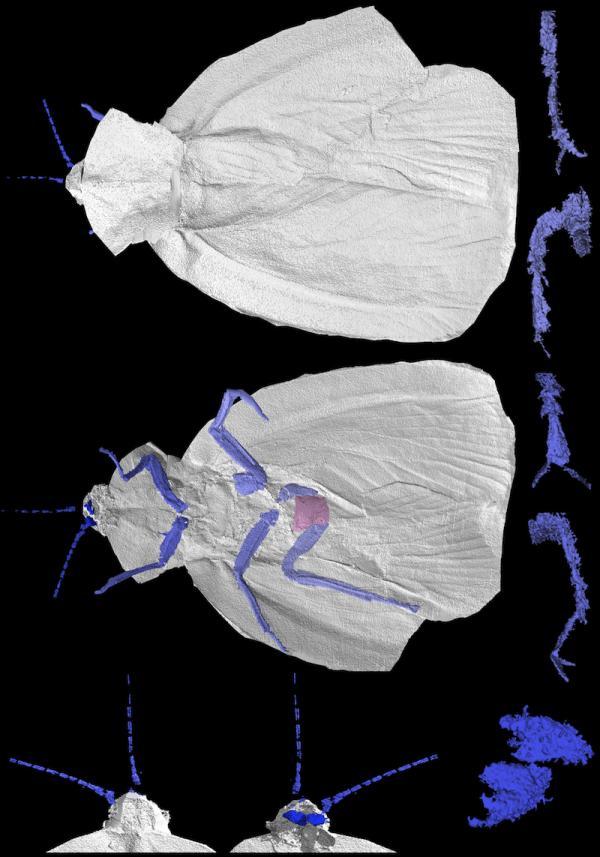We're open daily! View holiday hours
Science News
Modeling Ancient Cockroaches
April 14, 2010

They’ll be here when we’re gone and they were here way before us—cockroaches.
In attempting to discover how pre-historic, 300 million year old cockroaches lived and behaved, a team of scientists in London have modeled a fossilized specimen of Archimylacris eggintoni, and published their research in the journal Biology Letters.
Archimylacris eggintoni is an ancient ancestor of modern cockroaches, mantises and termites. This insect scuttled around on Earth during the Carboniferous period 359 -- 299 million years ago, which was a time when life had recently emerged from the oceans to live on land.
The study reveals for the first time how Archimylacris eggintoni's physical traits helped it to thrive on the floor of Earth's early forests. The fossils of these creatures are normally between 2cm and 9cm in length and approximately 4cm in width.
“Thanks to our 3D modelling process, we can see how Archimylacris eggintoni's limbs were well adapted for all terrains, as it was not only adept in the air but also very agile on the ground,” according to Russell Garwood, a PhD student from the Department of Earth Science and Engineering at Imperial College London and the lead author of the study.
Using a CT scanning device, the researchers were able to take 3,142 x-rays of the fossil and compile the images into an accurate 3D model, creating a 'virtual fossil' of the creature.
Because very few limbs of this species—or other roach-like insects from this era—have been preserved in fossils, it has been hard for scientists to glean insights into their way of life. But the new model suggests that Archimylacris eggintoni's legs could help it to run fast.
They were able to gleam more information, as well. Garwood adds: “We now think this ancient ancestor of the cockroach spent most of the day on the forest floor, living in and eating lots of rotting plant and insect matter, which was probably the bug equivalent of heaven. We think it could have used its speed to evade predators and its climbing abilities to scale trees and lay eggs on leaves, much in the same way that modern forest cockroaches do today.”
Image Credit: Imperial College London and the Natural History Museum